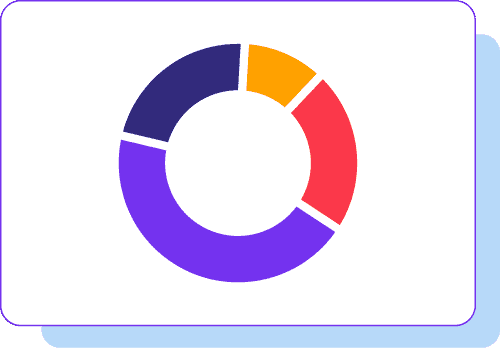Welcome to the Learning Hub at EruptSEO, your go-to resource for understanding the intricacies of the digital landscape. In this comprehensive guide, we embark on a journey through the fascinating realm of search algorithms—a cornerstone of how we navigate and discover information on the internet.
What Are Search Algorithms?
At the heart of the web’s vast repository of information lies the ingenious machinery of search algorithms. These algorithms, the unsung heroes of online exploration, play a pivotal role in the dynamic process of information retrieval. Simply put, they are the guiding forces behind the scenes, determining the relevance of search results to a user’s query.
Understanding search algorithms is like deciphering the language that search engines speak. These algorithms tirelessly sift through the vast expanse of web content, evaluating signals and cues to deliver results that match user intent. Their primary mission is to make the online experience seamless, intuitive, and relevant.
Table 1: Key Concepts in Search Algorithms
| Concept | Description |
|---|---|
| Search Algorithm | A set of rules and calculations that search engines use to rank and display search results. |
| Information Retrieval | The process of obtaining information from a database or collection based on a user’s query. |
| User Intent | The specific goal or information a user is seeking when conducting a search. |
Why Understanding Search Algorithms Matters
In the ever-evolving landscape of the digital world, a grasp of search algorithms is indispensable for various stakeholders—website owners, marketers, and SEO professionals alike. The decisions made by these algorithms directly influence the visibility and ranking of online content, making them a focal point for those seeking to establish and enhance their digital presence.
By understanding search algorithms, individuals and businesses can navigate the complexities of online visibility. It’s not merely a matter of rankings; it’s about aligning with the pulse of user intent and providing content that genuinely serves the needs of the audience.
Table 2: Stakeholders and the Impact of Search Algorithms
| Stakeholder | Impact of Understanding Search Algorithms |
|---|---|
| Website Owners | Enhance visibility, reach target audiences, and improve user experience on their sites. |
| Marketers | Tailor strategies to align with algorithmic preferences, driving more effective campaigns. |
| SEO Professionals | Optimise content and strategies to improve search rankings and overall online presence. |
So, as we delve into the depths of search algorithms in this EruptSEO Learning Hub article, prepare to unravel the mysteries behind how we discover, explore, and connect on the digital frontier. Let’s embark on a journey that demystifies the algorithms shaping the way we interact with the vast universe of information online.
How Search Engines Work
Understanding how search engines operate is fundamental to learning the significance of search algorithms. In this chapter, we delve into search engine functionality, exploring the core components that power the search experience.
Overview of Search Engine Functionality

Core Components
At the heart of every search engine lies a sophisticated infrastructure comprising three core components: crawling, indexing, and ranking.
Crawling: Think of crawling as the exploration phase. Search engine bots, commonly known as crawlers or spiders, traverse the web, navigating from one page to another. During this process, they discover and collect information about web pages.
Indexing: Once information is collected, the search engine indexes the content. Indexing involves organising and storing the gathered data in a structured manner. This indexed database serves as the foundation for delivering search results.
Ranking: When a user enters a query, the search engine employs algorithms to rank the indexed pages based on relevance. The ranking process determines the order in which results appear on the search engine results pages (SERPs).
Table 1: Core Components of Search Engine Functionality
| Component | Description |
|---|---|
| Crawling | Exploration phase where search engine bots discover and collect information about web pages. |
| Indexing | Organization and storage of collected data in a structured manner for quick retrieval. |
| Ranking | Utilization of algorithms to determine the relevance and order of search results. |
Crawling and Indexing in Action
Let’s visualise this process with a scenario:
- Discovery (Crawling): Imagine a crawler as a diligent explorer traversing a vast library. It systematically moves through the aisles, picking up books (web pages) and noting down their titles and content.
- Organisation (Indexing): Now, envision the crawler returning to a central desk where the librarian (indexing system) categorises and arranges the collected books based on topics and themes. Each book is assigned a specific location for quick retrieval.
- User Query (Ranking): When a reader (user) asks the librarian (search engine) for books on a particular subject, the librarian refers to the organized index, retrieves relevant books, and presents them in a ranked order, ensuring the most pertinent ones are easily accessible.
The Evolution of Search Engines
The journey of search engines is a fascinating timeline that reflects the evolution of the digital landscape:
| Year | Milestone |
|---|---|
| 1990s | Emergence of the first search engines, including Archie, Gopher, and early web directories. |
| 1996 | Introduction of Google, along with the revolutionary PageRank algorithm. |
| Early 2000s | Rise of algorithm updates focusing on link quality, relevance, and user experience. |
| 2010s | Dominance of mobile search and the advent of machine learning algorithms like Google’s RankBrain. |
| Present | Ongoing advancements in natural language processing and the integration of AI in search algorithms. |
Major Algorithmic Updates
Over the years, search engines have undergone transformative updates to adapt to changing user behaviours and combat manipulation. Notable updates, such as Google’s PageRank algorithm and the introduction of user-centric algorithms, have shaped the landscape of online search.
| Year | Search Engine | Name | Description |
|---|---|---|---|
| 2018 | Medic Update | Focused on health-related websites, emphasizing expertise, authority, and trustworthiness in medical and health content. | |
| 2019 | BERT (Bidirectional Encoder Representations from Transformers) | Enhanced understanding of context and nuances in search queries for more accurate results. | |
| 2020 | Core Web Vitals | Emphasized user experience by incorporating page speed, interactivity, and visual stability as ranking factors. | |
| 2021 | Page Experience Update | Expanded Core Web Vitals’ impact on rankings, prioritizing sites offering a positive user experience. | |
| 2022 | MUM (Multitask Unified Model) | Focused on understanding complex queries and providing more diverse and comprehensive search results. |
In the next chapter, we’ll delve deeper into the core elements that search algorithms consider when evaluating the relevance and authority of web pages. Join us on this journey through the mechanics of search engines and the algorithms that power our digital exploration.
Core Elements Considered by Search Algorithms
As we continue exploring the world of search algorithms, it’s crucial to understand the core elements that these algorithms evaluate when determining the relevance and authority of web pages. This chapter’ll delve into the key factors shaping how search engines interpret and rank content.

On-Page SEO Factors
Content Quality
Content quality refers to the relevance, depth, and uniqueness of the information presented on a web page. Search engines prioritise high-quality content that satisfies user intent and provides valuable insights.
Importance: Quality content is a fundamental driver of search engine rankings. It engages users, encourages longer dwell times, and establishes the credibility of a website.
Keyword Optimisation
Keyword optimisation involves strategically incorporating relevant keywords into a web page’s content, title, headings, and meta tags. This helps search engines understand the topical focus of the page.
Importance: Proper keyword optimisation enhances a page’s visibility for specific queries, increasing the likelihood of attracting targeted organic traffic.
Table 1: On-Page SEO Factors
| Factor | Definition | Importance |
|---|---|---|
| Content Quality | Relevance, depth, and uniqueness of the information presented on a web page. | Fundamental driver of search engine rankings, engaging users and establishing website credibility. |
| Keyword Optimisation | Strategic incorporation of relevant keywords into a web page’s content, title, headings, and meta tags. | Enhances visibility for specific queries, increasing the likelihood of attracting targeted organic traffic. |
Off-Page SEO Factors
Backlink Profile
A backlink profile represents the collection of external links pointing to a website. Search engines view high-quality, relevant backlinks as indicators of a site’s authority and trustworthiness.
Importance: A robust backlink profile contributes significantly to a website’s authority, influencing its position in search engine rankings.
Social Signals
Social signals refer to a website’s presence and activity on social media platforms. While not a direct ranking factor, social signals can impact brand visibility and indirectly influence search rankings.
Importance: Social signals contribute to brand awareness and audience engagement, potentially leading to increased organic traffic and improved search visibility.
Table 2: Off-Page SEO Factors
| Factor | Definition | Importance |
|---|---|---|
| Backlink Profile | Collection of external links pointing to a website. | Significant contributor to a website’s authority, influencing its position in search engine rankings. |
| Social Signals | Presence and activity on social media platforms impacting brand visibility and indirectly influencing search rankings. | Contributes to brand awareness, audience engagement, and potential improvements in search visibility. |
Technical SEO Factors
Site Speed
Site speed refers to the time it takes for a web page to load. Faster-loading pages enhance user experience and are favoured by search engines.
Importance: Site speed is a crucial technical factor that can impact bounce rates, user satisfaction, and search rankings.
Mobile Friendliness
Mobile friendliness assesses how well a website performs and displays on mobile devices. Search engines prioritise mobile-friendly sites to accommodate the increasing number of mobile users.
Importance: With the prevalence of mobile browsing, mobile friendliness is a key factor in search rankings and overall user experience.
Table 3: Technical SEO Factors
| Factor | Definition | Importance |
|---|---|---|
| Site Speed | Time it takes for a web page to load. | Crucial for user experience, impacting bounce rates, user satisfaction, and search engine rankings. |
| Mobile Friendliness | Assessment of how well a website performs and displays on mobile devices. | Prioritised by search engines to accommodate the increasing number of mobile users, impacting search rankings. |
Want to delve deeper into the world of SEO? Explore the intricacies of search algorithms and discover more about on-page, off-page, and technical SEO in our comprehensive guide for beginners. Start your journey to mastering SEO with EruptSEO’s Ultimate SEO Guide.
Relevance, Authority, Trustworthiness
In this chapter, we’ll delve into the core elements that shape the functionality of search algorithms, understanding how relevance, authority, and trustworthiness play pivotal roles in determining the search engine rankings of web pages.
Relevance Factors
The Role of Keywords and Semantic Relevance
Keywords are the backbone of search queries, but their significance goes beyond mere matching. Search algorithms now consider semantic relevance, focusing on the meaning behind the words. Understanding user intent and delivering contextually relevant content is crucial for SEO success.
Strategies:
- Keyword Research: Conduct comprehensive keyword research to identify the terms and phrases users are searching for.
- Semantic SEO: Create content that addresses the broader context of user queries, incorporating semantically related terms.
Understanding User Intent and Context
Search engines aim to understand user intent to deliver the most relevant results. User intent can be informational, navigational, or transactional. Tailoring content to align with user intent enhances its visibility in search results.
Strategies:
- User Persona Development: Identify and understand your target audience to align content with their specific needs and intentions.
- Long-Tail Keywords: Incorporate long-tail keywords that capture specific user queries and intent.
Relevance Signals in Content, Titles, and Meta Tags
Content, titles, and meta tags communicate the essence of a page to search engines. Optimising these elements with relevant keywords and informative content enhances the page’s relevance.
Strategies:
- Optimise Meta Tags: Craft compelling meta titles and descriptions that accurately represent the content.
- Content Relevance: Ensure content is valuable, engaging, and directly addresses the user’s query.
Table 3.1: Strategies for Relevance Factors
| Relevance Factors | Overview | Strategies |
|---|---|---|
| The Role of Keywords | Goes beyond matching; semantic relevance is crucial. | Conduct comprehensive keyword research. Create content addressing broader contexts. |
| Understanding User Intent | Aims to understand user intent for relevant results. | Identify target audience. Incorporate long-tail keywords capturing specific intent. |
| Relevance Signals in Content | Content, titles, and meta tags communicate a page’s essence. | Craft compelling meta tags. Ensure content is valuable and addresses user’s query. |
Authority and Trustworthiness
The Importance of Backlinks and Link Quality
Backlinks are akin to votes of confidence from other websites. Search algorithms view high-quality backlinks as indicators of a site’s authority and trustworthiness.
Strategies:
- Link Building: Focus on acquiring high-quality backlinks from authoritative and relevant websites.
- Diversify Anchor Texts: Use a variety of anchor texts to maintain a natural backlink profile.
Evaluating Domain Authority and Page Authority
Definition: Domain Authority (DA) and Page Authority (PA) are metrics that assess the overall and page-specific strength of a website. Higher DA and PA contribute to enhanced search rankings.
Strategies:
- Regular Audits: Conduct periodic audits of your website’s DA and PA to identify areas for improvement.
- Quality Content: Consistently produce high-quality content to boost both domain and page authority.
Trust Signals and Their Impact on Search Rankings
Trust Indicators: Trust signals encompass factors like site security, user reviews, and accurate business information. Websites with strong trust signals are more likely to rank higher.
Strategies:
- SSL Certification: Ensure your website has an SSL certificate for secure connections.
- Online Reputation Management: Encourage positive user reviews and address any negative feedback promptly.
Table 3.2: Strategies for Authority and Trustworthiness Factors
| Authority and Trustworthiness Factors | Significance | Strategies |
|---|---|---|
| The Importance of Backlinks | Backlinks act as votes of confidence, reflecting a site’s authority. | Focus on acquiring high-quality backlinks. Diversify anchor texts for a natural profile. |
| Evaluating Domain Authority and Page | DA and PA are metrics assessing overall and page-specific strength. | Conduct regular audits. Consistently produce high-quality content to boost authority. |
| Trust Signals and Their Impact on | Trust indicators, including site security and user reviews, influence rankings. | Ensure SSL certification. Manage online reputation with positive reviews and addressing negatives. |
In the upcoming chapter, we’ll explore the different types of search algorithms, from traditional ranking methods like PageRank to the dynamic landscape of machine learning and AI-driven algorithms.
Types of Search Algorithms
In this chapter, we will explore the various types of search algorithms that power the world of online searches. Understanding these algorithms is essential for crafting effective SEO strategies and optimising your digital presence.

Traditional Ranking Algorithms
Overview of Traditional Algorithms like PageRank
Traditional ranking algorithms have played a fundamental role in shaping how search engines evaluate and rank web pages. One of the pioneering algorithms in this category is PageRank, developed by Google’s founders, Larry Page and Sergey Brin. In the early days of web search, PageRank revolutionised the concept of authority and influence on the internet.
How PageRank Works: PageRank operates on the premise that the importance of a web page can be quantified by the number and quality of links pointing to it. Each page is assigned a numerical value, and this value represents its authority. The more high-quality links a page accumulates, the higher its PageRank.
Strengths and Limitations of Traditional Algorithms
| Algorithm | Developer | Key Concept |
|---|---|---|
| PageRank | Larry Page, Sergey Brin | Importance based on links |
Strengths of Traditional Algorithms
| Strengths |
|---|
| – Provided a quantitative measure of page authority. |
| – Encouraged the development of high-quality content. |
Limitations of Traditional Algorithms
| Limitations |
|---|
| – Susceptible to manipulation. |
| – Did not adapt well to real-time relevance. |
Machine Learning and AI Algorithms
Introduction to Machine Learning in Search Algorithms
The evolution of user behavior and the internet posed challenges to traditional algorithms in adapting to the dynamic nature of content and user queries. Machine learning algorithms emerged as a solution to these challenges, introducing a more adaptive and intelligent approach to search.
RankBrain, a machine learning algorithm developed by Google, marked a significant shift in search technology. Unlike traditional algorithms, RankBrain interprets and learns from user queries. It adapts search results based on context, user intent, and patterns it identifies, continuously improving its understanding over time.
The Evolving Landscape: Machine learning algorithms represent a departure from static rule-based systems. They continuously adapt to changing user behavior, preferences, and content dynamics. This adaptability allows for more personalised and accurate search results, enhancing the overall user experience.
Strengths and Limitations of Machine Learning and AI Algorithms
| Algorithm | Developer | Key Concept |
|---|---|---|
| RankBrain | Machine learning for query analysis |
Strengths of Machine Learning and AI Algorithms
| Strengths |
|---|
| – Improved search accuracy by understanding context and user intent. |
Limitations of Machine Learning and AI Algorithms
| Limitations |
|---|
| – Initial lack of transparency in how adjustments were made. |
In the next section, we’ll dive into the crucial need for algorithm updates, exploring why they are necessary to keep pace with the dynamic online environment and evolving user expectations.
Understanding Algorithm Updates
In this chapter, we delve into the dynamic nature of search algorithms and the importance of regular updates. The online environment is ever-evolving, influenced by changes in user behavior, technological advancements, and the ongoing battle against spam and low-quality content.
The Need for Algorithm Updates
The internet is a dynamic ecosystem where user preferences, technology, and content trends are in a constant state of flux. To ensure search engines deliver relevant and valuable results, algorithms must evolve to meet the changing landscape.
User Behavior Changes and Evolving Expectations:
- Shifts in how users interact with the internet necessitate adjustments in search algorithms.
- Evolving expectations for instant, accurate, and personalized results shape algorithmic updates.
Combatting Spam and Low-Quality Content:
- Search engines strive to maintain the integrity of search results by combating spammy practices.
- Algorithm updates target low-quality content, ensuring users receive credible and valuable information.
Notable Algorithm Updates
Examples of Significant Algorithm Updates
| Algorithm | Year | Description |
|---|---|---|
| Google Panda | 2011 | Google Panda aimed to penalise websites with low-quality content, focusing on content farm sites and improving the overall quality of search results. |
| Google Hummingbird | 2013 | Hummingbird marked a shift towards understanding user intent and context, emphasizing conversational search queries and delivering more precise results. |
Recent Updates (Timeline):
| Year | Algorithm Update | Description | Search Engine |
|---|---|---|---|
| 2021 | BERT (Bidirectional Encoder Representations from Transformers) | Improves the understanding of context in search queries, leading to more accurate results. | |
| 2022 | MUM (Multitask Unified Model) | Aims to understand information in multiple languages and formats, enhancing search capabilities. |
Lessons Learned from Major Updates:
- Algorithm updates are driven by a commitment to providing a better user experience.
- Websites that prioritize high-quality, relevant content are more likely to thrive amidst updates.
In the next chapter, we’ll explore strategies for optimizing content and websites in alignment with search algorithms, ensuring sustained visibility and relevance.
Optimising for Search Algorithms
In this section, we’ll explore strategies for optimising your content and website to align with search algorithms. Understanding how search engines evaluate and rank web pages is crucial for maintaining visibility and relevance in the ever-evolving digital landscape.

SEO Practices: Ethical vs. Manipulative
Ethical SEO practices, also known as White Hat SEO, align with search engine guidelines. These practices focus on creating high-quality content, providing a positive user experience, and employing legitimate strategies to improve website visibility.
Manipulative techniques, known as Black Hat SEO, involve tactics that violate search engine guidelines. While they may result in short-term gains, they carry significant risks, including penalties and damage to online credibility.
Successful SEO strategies emphasise White Hat techniques, ensuring long-term success and a positive online reputation. Striking a balance between optimisation efforts and ethical practices is key to sustainable growth.
| Optimisation Strategy | Description |
|---|---|
| Ethical SEO (White Hat) | Practices aligned with search engine guidelines, emphasising high-quality content and a positive user experience. |
| Risks of Black Hat SEO | Manipulative tactics that violate guidelines, resulting in short-term gains but risking penalties and damage to online credibility. |
| Balanced Approach | Striking a balance between optimisation efforts and ethical practices for sustainable SEO success and a positive online reputation. |
Content Strategies for Algorithms
Search algorithms prioritise content that is relevant, valuable, and user-centric. Creating high-quality content that addresses user intent and provides valuable information enhances your chances of ranking well in search results.
User experience is a crucial factor in search rankings. Algorithms assess factors such as page load speed, mobile responsiveness, and overall usability. Optimising these elements contributes to a positive user experience and improved search visibility.
Algorithm updates may impact the ranking factors considered by search engines. Staying informed about industry trends, monitoring algorithm changes, and adapting your content strategy accordingly will help you stay ahead in the dynamic SEO landscape.
| Content Strategy | Description |
|---|---|
| Quality Content Creation | Prioritising relevant, valuable, and user-centric content to align with algorithmic preferences and improve search rankings. |
| User Experience Optimisation | Focusing on factors such as page load speed and mobile responsiveness to enhance user experience, contributing to improved search visibility. |
| Adaptation to Algorithmic Changes | Staying informed about industry trends and algorithm updates, and adapting content strategy accordingly to stay ahead in the dynamic SEO landscape. |
In the next chapter, we’ll explore the future of search algorithms, delving into emerging trends and ethical considerations that will shape the SEO landscape in the years to come.
The Future of Search Algorithms
In this chapter, we’ll explore emerging trends in search technology and ethical considerations that will play a crucial role in shaping the SEO landscape in the future.
Emerging Trends in Search Technology
Voice Search and its Impact on Algorithms
With the proliferation of voice-activated devices and virtual assistants, voice search has become increasingly prevalent. This trend presents a shift in how users interact with search engines, prompting algorithms to adapt to the nuances of spoken queries.
Voice search introduces challenges related to natural language processing and understanding conversational context. Search algorithms are evolving to better interpret spoken queries, providing more accurate and context-aware results.
Ethical Considerations in Search Algorithms
Addressing Biases and Ethical Concerns
As algorithms play a significant role in determining what information users see, addressing biases becomes crucial. Search engines are under increasing pressure to ensure fair and unbiased search results.
Ethical considerations extend to transparency in algorithmic decision-making. Users are increasingly concerned about how their data is used. Search engines are working towards providing clearer insights into how algorithms operate while prioritising user privacy.
As key players in the digital landscape, search engine providers bear the responsibility of ensuring that their algorithms serve the greater good. This involves addressing biases, upholding transparency, and safeguarding user privacy.
| Search Technology Trend | Description |
|---|---|
| Voice Search Impact | The rise of voice search necessitates algorithmic adaptations to understand spoken queries, introducing challenges in natural language processing. |
| Addressing Algorithmic Biases | Search engines are addressing biases in algorithmic decision-making to ensure fair and unbiased search results, emphasizing transparency and user privacy. |
| Responsibility of Providers | Search engine providers bear the responsibility of addressing biases, ensuring transparency, and safeguarding user privacy in algorithmic operations. |
In the concluding chapter, we’ll summarise key takeaways from this guide and encourage continuous learning and adaptation in the dynamic field of SEO.
Conclusion
In this final chapter, we’ll summarise the essential concepts covered in this guide and emphasise the importance of continuous learning and adaptation in the dynamic field of SEO.
Key Takeaways
Understanding Algorithm Updates
| Key Concept | Description |
|---|---|
| Dynamic Nature | Algorithm updates are driven by the constant evolution of the online environment, adapting to changes in user behaviour, technological advancements, and the need to combat spam. |
| User Behaviour Changes | Shifts in how users interact with the internet and evolving expectations shape the direction of algorithmic updates. |
| Combatting Spam | Algorithm updates play a crucial role in maintaining the integrity of search results by combating spam and prioritising high-quality content. |
Optimising for Search Algorithms
| Key Concept | Description |
|---|---|
| Ethical SEO Practices | White Hat SEO, focusing on ethical practices aligned with search engine guidelines, is essential for sustainable success. |
| Quality Content | Prioritising high-quality, user-centric content is fundamental for aligning with algorithmic preferences and improving search rankings. |
| User Experience Matters | Optimising for positive user experience, including factors like page load speed and mobile responsiveness, contributes to improved search visibility. |
Consider EruptSEO as your dedicated partner in SEO excellence. Explore our comprehensive SEO services designed to elevate your online presence and ensure sustained success in the ever-evolving digital landscape.
Thank you for joining us on this exploration of the ultimate guide to SEO for beginners. Wishing you success in your SEO endeavors!
Visit EruptSEO’s SEO Services page to discover how we can help you achieve SEO excellence.















